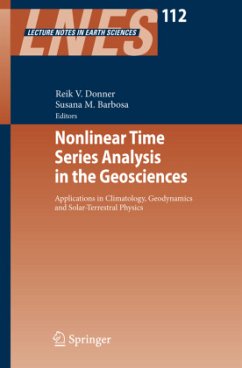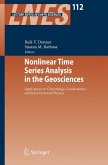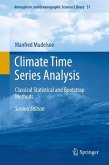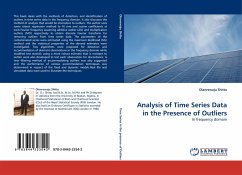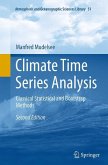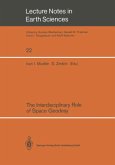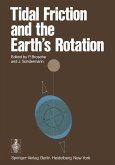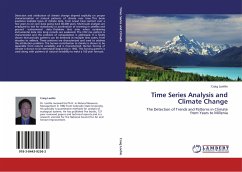The understanding of dynamical processes in the complex system "Earth" requires the appropriate analysis of a large amount of data from observations and/or model simulations. In this volume, modern nonlinear approaches are introduced and used to study specifiic questions relevant to present-day geoscience. The approaches include spatio-temporal methods, time-frequency analysis, dimension analysis (in particular, for multivariate data), nonlinear statistical decomposition, methods designed for treating data with uneven sampling or missing values, nonlinear correlation and synchronization analysis, surrogate data techniques, network approaches, and nonlinear methods of noise reduction. This book aims to present a collection of state-of-the-art scientific contributions used in current studies by some of the world's leading scientists in this field.
The enormous progress over the last decades in our understanding of the mechanisms behind the complex system "Earth" is to a large extent based on the availability of enlarged data sets and sophisticated methods for their analysis. Univariate as well as multivariate time series are a particular class of such data which are of special importance for studying the dynamical p- cesses in complex systems. Time series analysis theory and applications in geo- and astrophysics have always been mutually stimulating, starting with classical (linear) problems like the proper estimation of power spectra, which hasbeenputforwardbyUdnyYule(studyingthefeaturesofsunspotactivity) and, later, by John Tukey. In the second half of the 20th century, more and more evidence has been accumulated that most processes in nature are intrinsically non-linear and thus cannot be su?ciently studied by linear statistical methods. With mat- matical developments in the ?elds of dynamic system's theory, exempli?ed by Edward Lorenz's pioneering work, and fractal theory, starting with the early fractal concepts inferred by Harold Edwin Hurst from the analysis of geoph- ical time series,nonlinear methods became available for time seriesanalysis as well. Over the last decades, these methods have attracted an increasing int- est in various branches of the earth sciences. The world's leading associations of geoscientists, the American Geophysical Union (AGU) and the European Geosciences Union (EGU) have reacted to these trends with the formation of special nonlinear focus groups and topical sections, which are actively present at the corresponding annual assemblies.
The enormous progress over the last decades in our understanding of the mechanisms behind the complex system "Earth" is to a large extent based on the availability of enlarged data sets and sophisticated methods for their analysis. Univariate as well as multivariate time series are a particular class of such data which are of special importance for studying the dynamical p- cesses in complex systems. Time series analysis theory and applications in geo- and astrophysics have always been mutually stimulating, starting with classical (linear) problems like the proper estimation of power spectra, which hasbeenputforwardbyUdnyYule(studyingthefeaturesofsunspotactivity) and, later, by John Tukey. In the second half of the 20th century, more and more evidence has been accumulated that most processes in nature are intrinsically non-linear and thus cannot be su?ciently studied by linear statistical methods. With mat- matical developments in the ?elds of dynamic system's theory, exempli?ed by Edward Lorenz's pioneering work, and fractal theory, starting with the early fractal concepts inferred by Harold Edwin Hurst from the analysis of geoph- ical time series,nonlinear methods became available for time seriesanalysis as well. Over the last decades, these methods have attracted an increasing int- est in various branches of the earth sciences. The world's leading associations of geoscientists, the American Geophysical Union (AGU) and the European Geosciences Union (EGU) have reacted to these trends with the formation of special nonlinear focus groups and topical sections, which are actively present at the corresponding annual assemblies.

